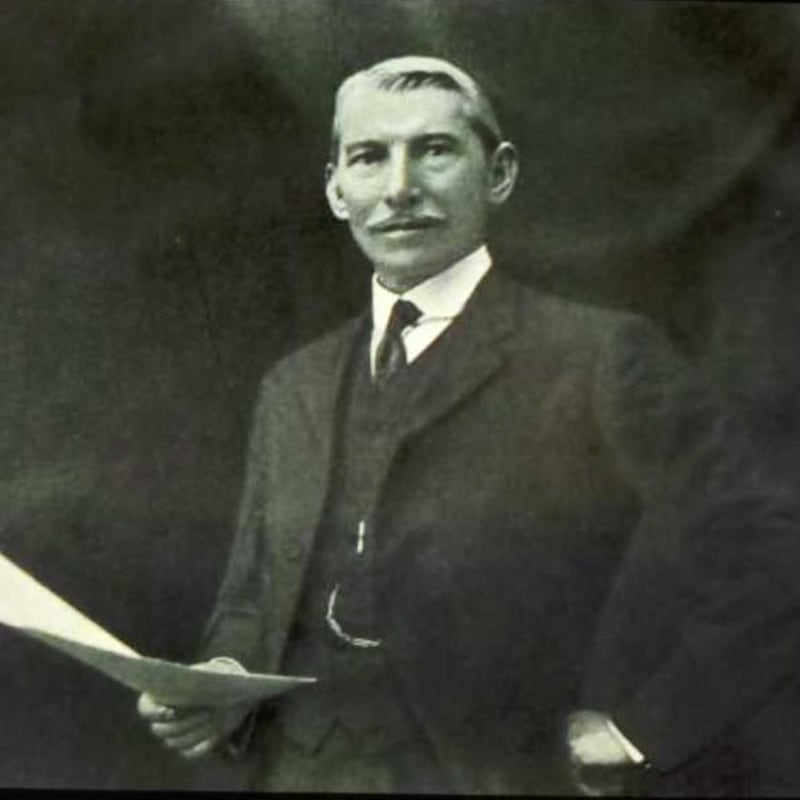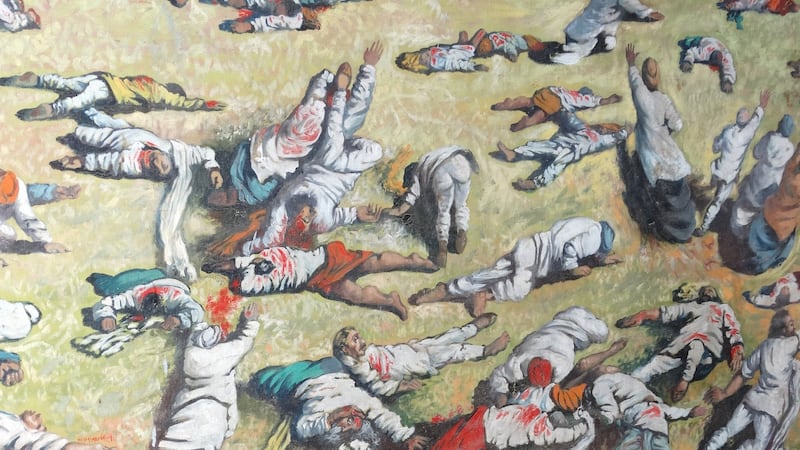After a long and tempestuous life in the service of British imperialism, Sir Michael O'Dwyer had got used to a quiet life.
He endured years of recriminations over the Amritsar massacre which took place on April 13th, 1919. The episode in which British Indian troops opened fire on peaceful demonstrators in the Punjabi city of Amritsar, killing at least 379 (the number the British would admit to), effected a lasting rupture in British-Indian relations.
Amritsar happened on O'Dwyer's watch while he was lieutenant-governor of the Punjab. The massacre horrified the British establishment. It was, according to Winston Churchill, a "monstrous event". Its perpetrator, Colonel Reginald Dyer, was retired in disgrace.
O’Dwyer, a belligerent apologist for Amritsar, was denounced by liberal Britain and by Indian nationalists. Though he did not order the massacre, his culpability was secured by a notorious missive sent in its wake approving of what Dyer had done.
Yet O’Dwyer sensed the British public was on his side. He was vindicated in his own eyes when he won a celebrated libel action in 1924 in front of a British jury against an Indian nationalist who had accused him of pursuing draconian policies in the Punjab which led to the massacre.
He retired from the Indian Civil Service in 1925 and a year later he published his valedictory memoir, India as I Knew It. This was followed in 1933 by his family history The O'Dwyers of Kilnamanagh. He and his wife Una, a French woman, settled down in a country cottage in North Devon to live out the rest of their lives.
On March 13th, 1940, O'Dwyer made a rare public appearance at a public meeting in Caxton Hall, London, to discuss the future of Afghanistan.
He was 75, a grandee of British imperialism. Few there noticed the one Indian man in attendance who arrived in late and sidled his way up to the front. Proceedings had just ended when the man walked straight up to O’Dwyer and shot him twice through the heart.

O'Dwyer's killer, Udham Singh, is a hero in India. The date of his death is a national holiday in the Punjab. Last year a statue was unveiled in the Jallianwala Bagh, the walled garden which is the site of the Amritsar massacre. It depicts Singh with his fist clutching a sod of blood-soaked earth. According to legend, Singh witnessed the Amritsar massacre and vowed from that day forward he would track down the men responsible for the foul deed.
Justified
At his trial, he justified the assassination of O’Dwyer. “He wanted to crush the spirit of my people, so I have crushed him. For full 21 years I have been trying to wreak vengeance. I am happy that I have done the job. I am not scared of death. I am dying for my country.”
His victim, by contrast, is hardly known in his own country. O’Dwyer is an affront to the story we tell ourselves about the Irish being a perennially oppressed people in sympathy with other oppressed peoples.
We make much of how the Irish revolution inspired countries like India to strive for independence. We are less inclined to highlight Irish support for British colonialism.
Men like O'Dwyer staffed the Indian Civil Service, Irish doctors, the Indian Medical Service. Rudyard Kipling, the poet of Empire, was so taken by the cheerful, ruddy-faced Irish garrisons in India that his son John served in the Irish Guards in the first World War (and was killed).
The story of how Udham Singh waited in the longest of long grass to kill O'Dwyer is now the subject of a fascinating book, The Patient Assassin, by the author and broadcaster Anita Anand, whose grandfather was in Amritsar on the day of the massacre.

Singh was an orphan from India’s lowest caste, a drifter and army reject who wandered the world for decades yet never lost sight of his chosen goal: to avenge Amritsar. Dyer died in 1927 before Singh could track him down, which left O’Dwyer. In the mind of Singh, O’Dwyer and Dyer were conflated as one. It wasn’t only their names that were similar.
Anand said she suspected O’Dwyer might be Irish given his surname. “To Indians this might be surprising as they were all English as far as they were concerned,” she said.
“I was surprised to find so many Irish people were involved in the Raj and that he was an Irish Catholic born at a time when so many of his neighbours were suffering. I found all of that completely surprising and mesmerising. The Irish suffered from colonialism as much as anybody. “
Genuine affection
Dyer, she believes, had a genuine affection for India, the country of his birth, so long as the Indians knew their place. O’Dwyer, by contrast, “really did think of Indians as lesser and racially inferior”.
O’Dwyer represents the vanished tribe of Catholic Irish loyalists who believed as fervently in the British Empire as the British themselves. Before the Easter Rising, he said Jesuit schools “prided themselves on the numbers they passed into the service of the Crown, in the army and the civil service”.
O'Dwyer was from Barronstown, Co Tipperary. He was born in 1864 into a family which did well after the cataclysm of the famine. His background might lead to an expectation that he would have some empathy with Indian nationalists agitating for the same measure of home rule. The opposite was the case.
To appease a "small but ambitious English-educated [Indian] intelligentsia," O'Dwyer believed, "the demon of democracy" was being let loose. It was one thing to offer freedom to a small, homogenous country like Ireland; quite another to grant it to 315 million people "with its infinite variety of races, creeds and traditions".

O'Dwyer was one of 14 children, nine boys and five daughters. His father John had a 500-acre farm in the Golden Vale. Such a huge farm attracted covetous eyes during the Land War of the 1880s. O'Dwyer blamed his father's premature death on an incident when warning shots were fired into the farm in 1882.
His upbringing gave him a lifelong aversion to agitation and unrest. His worldview set the context for the disastrous Amritsar massacre.
Indian soldiers, particularly those from the Punjab, played a full part in the first World War. More than a million served with the British Empire. Not unlike their Irish counterparts, they anticipated a greater measure of self-government on their return.
Draconian measures
Instead, the British passed the Rowlatt Act – extending draconian wartime measures of detention without trial and censorship after the war ended. In response Mahatma Gandhi organised a peaceful protest throughout India known as “satyagraha” – a policy of mass non-cooperation with the British authorities.
He justified his actions afterwards by stating that what happened at Amritsar staunched a full-scale rebellion
O'Dwyer banned Gandhi from the Punjab. He also ordered the arrest of Gandhi's two most prominent supporters in the region, Saifuddin Kitchlew and Satya Pal, provoking the protests which led to the Amritsar massacre.
O’Dwyer wasn’t finished after Amritsar. A day later he ordered the RAF to strafe and bomb protesters from the air. At least a dozen civilians were killed.
He justified his actions afterwards by stating that what happened at Amritsar staunched a full-scale rebellion which would have led to even more bloodshed.
In his memoir he quoted approvingly from a predecessor as governor of the Punjab who stated the British were in India “by the force of circumstances and the will of providence . . . in doing so we are bound by our conscience and not theirs.” In discharging his public duties he confessed that it “never lost me a half an hour of sleep”.
In other ways the Amritsar massacre was made in Ireland. Dyer spent his formative years from 11 to 18 at Midleton College in Cork. It took him and his brother two months to travel from his hill station in India to Ireland to go to school. Once there, he did not return to his family in India for eight years. It was not conducive to the bringing-up of an empathetic individual.
Dyer was, according to his biographer Nigel Collett, a man who "never fitted into anything in his life". He proved to be a disastrous witness in his own defence at the hearings into the massacre. He baldly admitted that he wished to teach the Indians a lesson and would have killed even more had he been able to get machine guns into the walled garden.
Retired in disgrace
What enraged Indians even more was the support Dyer received in Britain after he was retired in disgrace. Here too the Irish were complicit. The Morning Post, a conservative, imperialist paper, set up a retirement fund for Dyer which eventually raised £26,000, a huge sum at the time. The first two contributors were O'Dwyer and his fellow Irishman Sir Edward Carson. Another Irish arch-imperialist, Field Marshal Sir Henry Wilson, worked tirelessly behind the scenes to protect Dyer, prophetically opining that "we should have many Dyer cases both in India and in Ireland, and that if we did not stand by our own soldiers we should lose their confidence". When Dyer died, the Irish Guards escorted his coffin through the streets of London.
Sir Michael was so sure that he would be venerated forever, that he had done his duty
Though it took another 28 years before India gained its independence, in 1947, Anand believes Amritsar was the beginning of the end for the Raj.
“A lot of people decided [after Amritsar] that power could no longer be shared with the British – Gandhi among them. They [the British] had to leave. It was also the time that people turned violent because asking nicely didn’t work anymore.
“Sir Michael was so sure that he would be venerated forever, that he had done his duty and would be regarded as the archetypal British man. Now nobody knows who he is.”
They do now.
The Patient Assassin is published by Simon & Schuster priced €17.95











